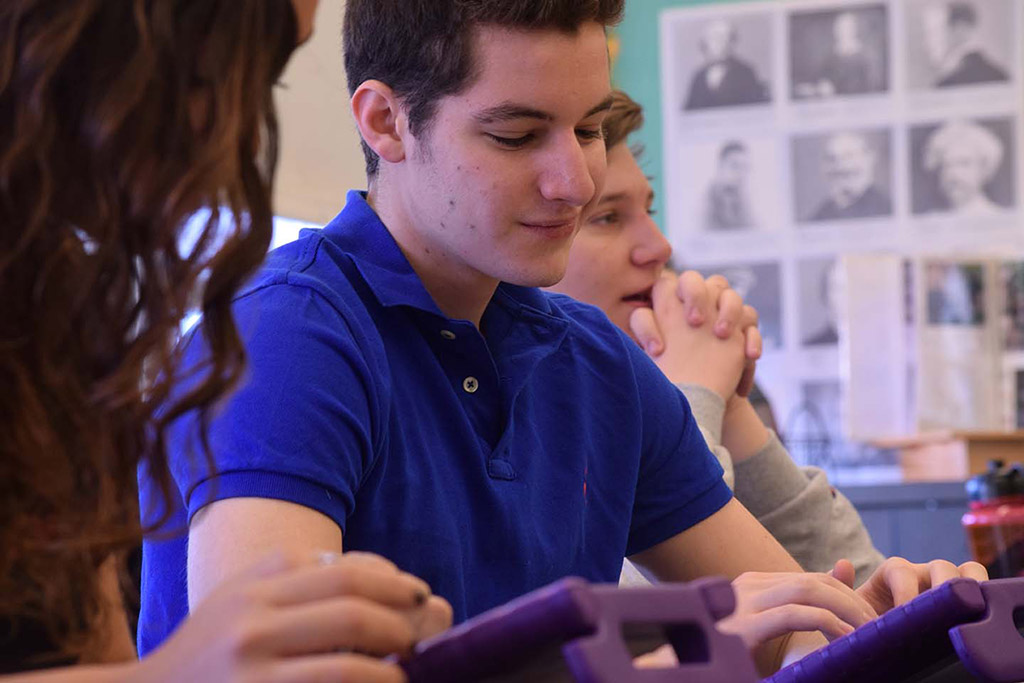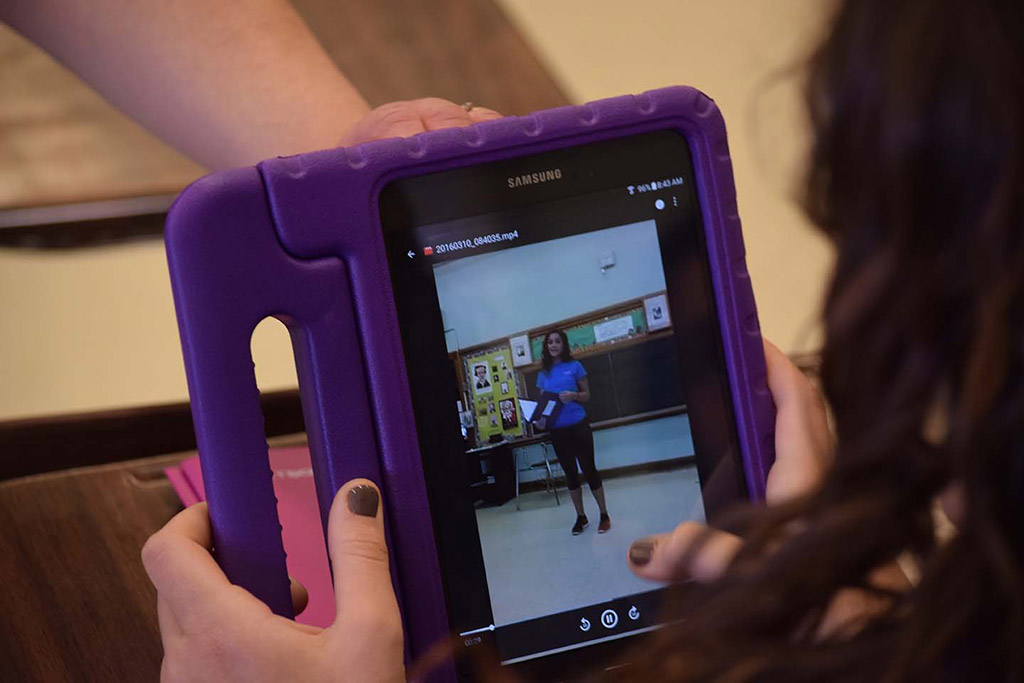At Cranford High School, Students Hone Speech Skills Using Eye-Opening Technology
New tools funded by the CFEE are helping them become more confident, effective communicators.
There’s nothing like seeing yourself give a speech to show you how you might be doing it better.
A CFEE grant paid for tablets that the students use for a few different tasks: recording videos of one another’s presentations, but also typing critiques that are shared with the entire class via Google Classroom.
As a result, each student is getting a wide-open, multilayered view of how he or she is coming across.
“The improvement that the students have shown is dramatic,” and is sure to continue, said their teacher, Michelle Balseiro, who applied for the grant.
The technology is helping to foster more class participation and richer discussions, in addition to giving students compelling, unmistakable visual evidence of how they can improve their public speaking.
“I’m able to see where my shortcomings are. I’m able to pinpoint my mistakes and to build off that,” said one student, Troy Caramanica. “Also, having other students in the class being able to critique us both verbally and on the tablets makes for a huge improvement.”
Ms. Balseiro got the idea for the grant last year when students asked if they could record each other’s presentations on their smartphones. The tablets not only keep the videos more secure than a smartphone would, but also allow for easier writing.
While one group of students is giving verbal critiques of a student’s presentation, another group is using the tablets to type comments that are displayed on a screen and visible to everyone. “You have two conversations going on, so more voices get to be heard,” Ms. Balseiro said.
Students gain confidence by seeing their comments affirmed or echoed by others, and also get ideas for improving their own presentations. “I’m seeing what Troy can improve on and I’m thinking, ‘Hmmm, maybe I could do that,’ and we’re learning from each other,” said another student, Emily Eichholtz.
Students might need to sway less, improve their intonation or pacing, or use more hand gestures if their speech is meant to cross a language barrier, for instance. Some students are weighing in more often because of the option to either offer a critique out loud or write it down.
The format is liberating. Because there's no longer any need to collect handwritten comments on note cards, as before, students have more time and flexibility for considering what they want to write.
Students present a variety of works including dramatic texts and their own speeches, either prepared or extemporaneous. At the end of the semester they’ll present the Lincoln-Douglas debates.
The students are compiling online “e-portfolios” of their presentations—stored securely in their Google accounts—and gaining computer skills they’ll need in college. But the big benefit, of course, is that they’re growing comfortable doing something that consistently ranks high among people’s biggest fears.
“Watching myself continually going up [to speak] is really helpful” in overcoming nervousness, said another student, Sarah Ross.
Ms. Balseiro has gotten ideas for using the tablets in other courses to enhance the curriculum—for instance, by having students use the tablets to share observations about a literary work while it’s being read aloud.
“I’m very thankful that the CFEE was able to supply my classroom with these 14 Samsung tablets,” she said. “This grant has provided invaluable support for personalized learning instruction and assessment for all of my students.”






